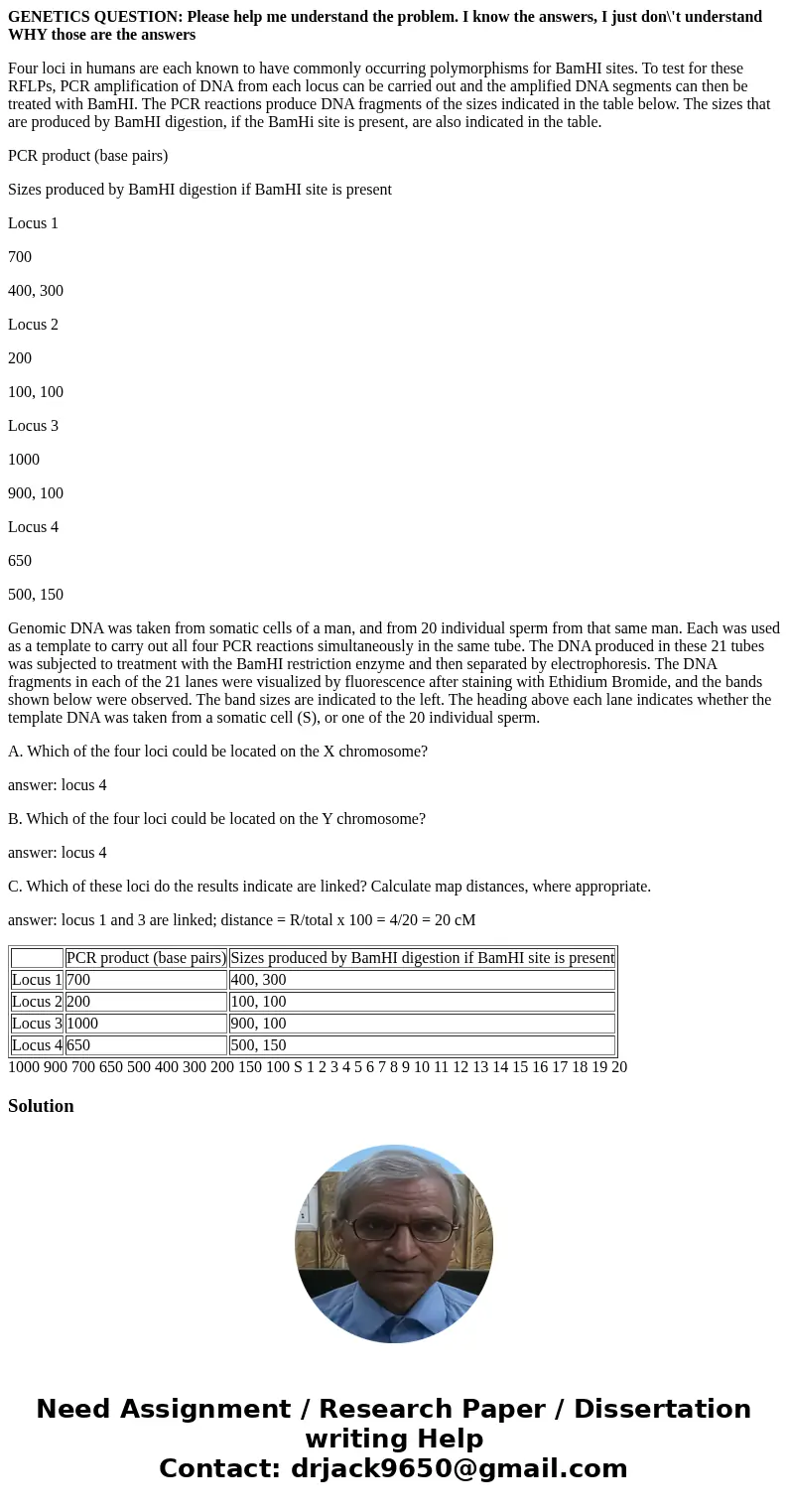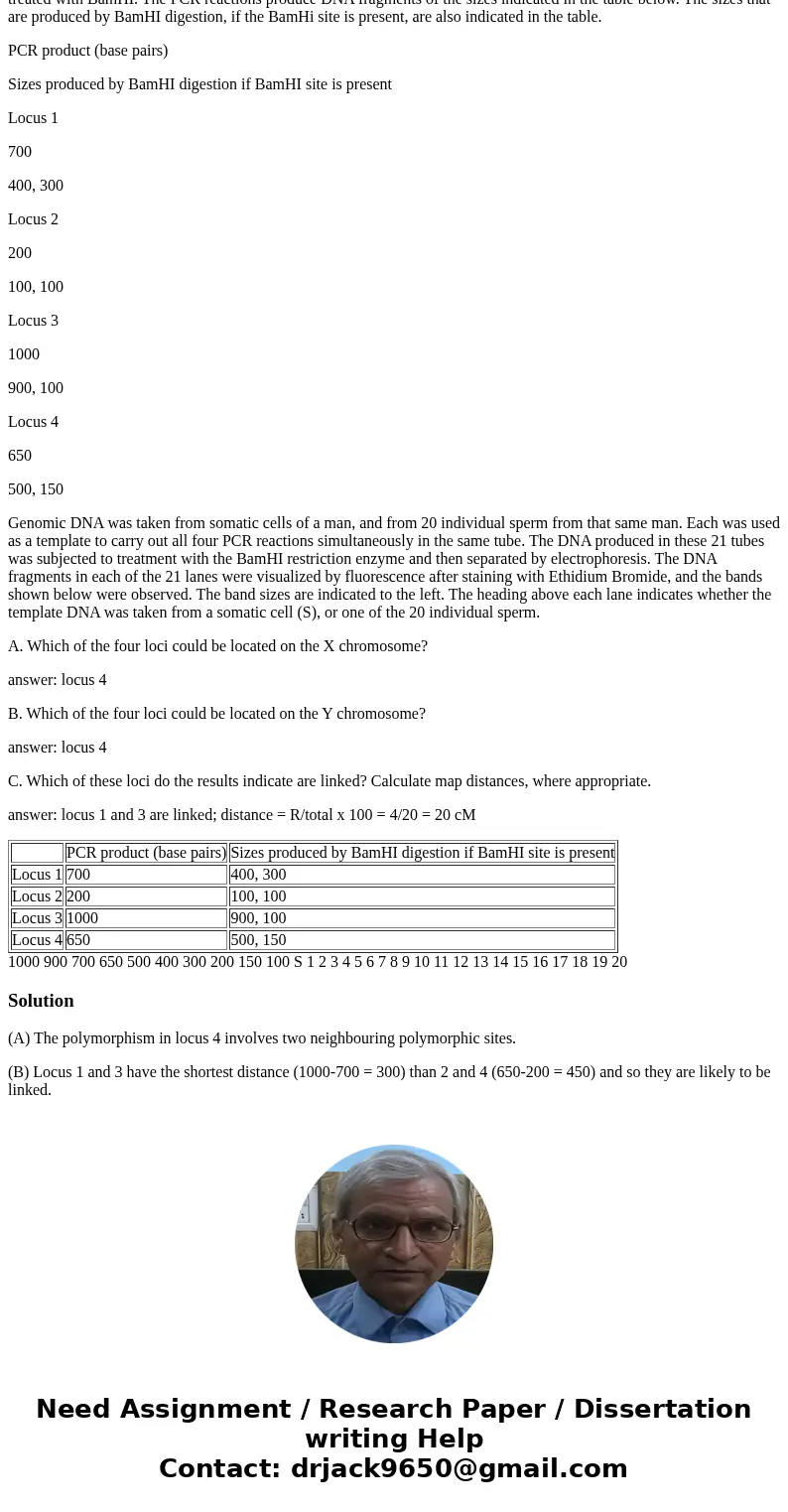GENETICS QUESTION Please help me understand the problem I kn
GENETICS QUESTION: Please help me understand the problem. I know the answers, I just don\'t understand WHY those are the answers
Four loci in humans are each known to have commonly occurring polymorphisms for BamHI sites. To test for these RFLPs, PCR amplification of DNA from each locus can be carried out and the amplified DNA segments can then be treated with BamHI. The PCR reactions produce DNA fragments of the sizes indicated in the table below. The sizes that are produced by BamHI digestion, if the BamHi site is present, are also indicated in the table.
PCR product (base pairs)
Sizes produced by BamHI digestion if BamHI site is present
Locus 1
700
400, 300
Locus 2
200
100, 100
Locus 3
1000
900, 100
Locus 4
650
500, 150
Genomic DNA was taken from somatic cells of a man, and from 20 individual sperm from that same man. Each was used as a template to carry out all four PCR reactions simultaneously in the same tube. The DNA produced in these 21 tubes was subjected to treatment with the BamHI restriction enzyme and then separated by electrophoresis. The DNA fragments in each of the 21 lanes were visualized by fluorescence after staining with Ethidium Bromide, and the bands shown below were observed. The band sizes are indicated to the left. The heading above each lane indicates whether the template DNA was taken from a somatic cell (S), or one of the 20 individual sperm.
A. Which of the four loci could be located on the X chromosome?
answer: locus 4
B. Which of the four loci could be located on the Y chromosome?
answer: locus 4
C. Which of these loci do the results indicate are linked? Calculate map distances, where appropriate.
answer: locus 1 and 3 are linked; distance = R/total x 100 = 4/20 = 20 cM
| PCR product (base pairs) | Sizes produced by BamHI digestion if BamHI site is present | |
| Locus 1 | 700 | 400, 300 |
| Locus 2 | 200 | 100, 100 |
| Locus 3 | 1000 | 900, 100 |
| Locus 4 | 650 | 500, 150 |
Solution
(A) The polymorphism in locus 4 involves two neighbouring polymorphic sites.
(B) Locus 1 and 3 have the shortest distance (1000-700 = 300) than 2 and 4 (650-200 = 450) and so they are likely to be linked.


 Homework Sourse
Homework Sourse